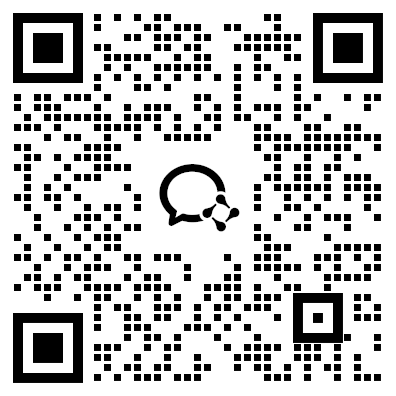2014-04-02 17:07:41 来源:新东方在线整理托福资料下载
TPO20 Lecture3
Literature (Folktales)
Narrator
Listen to part of a lecture in a literature class.
Professor
All right, so now we’ve talked about folk legends and seen that their ... one of their key features is there’s usually some real history behind them. They are often about real people, so you can identify with the characters, and that’s what engages us in them. The particular stories might not be true and some of the characters or events might be made up. But there’s still a sense that the story could have been true since it is about a real person. That’s distinct contrast from the other main branch of popular storytelling, which is folk tales.
Folk tales are imaginative stories that ... um ... like folk legends, they have been passed down orally, from storyteller to storyteller for ... since ancient times. But with folk tales you don’t ever really get the sense that the story might have been true. They are purely imaginative and so quite revealing, I think anyway, about the culture and the connection between folk tales and culture, which we’ll talk about.
But first let’s go over the various types of folk tale and focus specifically on Norwegian folk tales since they illustrate the variety pretty well. There are in general three main types of Norwegian folk tales. One is animal stories, where animals are the main characters. They can be wild animals or domestic, and a lot of times they can talk and behave like humans, but at the same time, they retain their animal characteristics too. They tend to involve animals like bears, wolves and foxes. The point of these stories, their, their internal objectives, so the speak, is usually to explain some feature of the animal, how it arose. So there’s one about a fox who fools a bear into going ice fishing with his tail. When the bear puts his tail into the water through a hole in the ice, to try and catch a fish, the ice freezes around it, and he ends up pulling his tail off. So that’s why bears to this day have such short tails.
The second category of Norwegian folk tale is the supernatural. Eh ... stories about giants and dragons and trolls, and humans with supernatural powers or gifts, like invisibility cloaks. Or where people are turned into animals and back again into a person, those are called transformation stories.
There’s a well-known Norwegian supernatural folk tale, a transformation story called east of the Sun and West of the Moon, which we’ll read. It involves a prince who is a white bear by night and a human by day. And he lives in the castle that’s east of the Sun and west of the Moon, which the heroine in the story has to try to find. Besides being a good example of a transformation story, this one also has a lot of the common things that tend to show up in folk tales. You will find the standard opening, ‘once upon a time .... And it has stock characters like a prince, and a poor but beautiful peasant girl, she is the heroine I mentioned. And ... um ... it has a very conventional form. So no more than two characters are involved in any one scene. And it has a happy ending. And it’s ... the story is presented as though ... well, even though a lot of the actions that occurred are pretty fantastic, so you’d never think of it as realistic. The characters still act like ... they resemble real people. They are not real or even based on historical figures. But you might have a supernatural story involving a king, and he’d act like you’d expect a Norwegian king to act.
OK. The third main kind of folk tale is the comical story. We’ll say more later about these, but for now, just be aware of the category and that they can contain supernatural aspects, but they are usually more playful and amusing overall than supernatural stories.
Now, as I said, traditionally, folk tales were just passed down orally. Each generation of storytellers had their own style of telling a story. But ... um ... in Norway, before the 19 century, folk tales were just for kids. They weren’t seen as worthy of analysis or academic attention. But this changed when the Romantic Movement spread throughout Europe in the mid-19th century. Romantics looked at folk tales as sort of a reflection of the soul of the people. So there was something distinctly Norwegian in folk tales from Norway. And there was renewed pride in the literature and art forms of individual countries. As a result, the first collection of Norwegian folk tales is published in 1852. And there have been many new editions published since then. For the people of Norway, these stories are now an important part of what it means to be Norwegian.
本文关键字: 托福听力TPO20原文 托福听力TPO20文本

 资料下载
资料下载
2021-2024托福机经试题|答案|范文下载
发布时间:2024-02-21关注新东方在线托福
回复【XDF】获取
托福全科备考资料大礼包
发布时间:2024-02-21关注新东方在线托福
回复【XDF】获取
托福正价课试听课程包
发布时间:2024-02-21关注新东方在线托福
回复【XDF】获取
托福定制备考规划
发布时间:2024-02-21关注新东方在线托福
回复【XDF】获取
托福TPO免费模考
发布时间:2024-02-21关注新东方在线托福
回复【XDF】获取
托福免费水平测试
发布时间:2024-02-21关注新东方在线托福
回复【XDF】获取
托福写作新题型模拟题+范文汇总[ETS发布]
发布时间:2023-07-30关注新东方在线托福
回复【XDF】获取
2023全年托福机经PDF版下载
发布时间:2023-06-17关注新东方在线托福
回复【XDF】获取
2022全年托福机经PDF版下载
发布时间:2023-06-17关注新东方在线托福
回复【XDF】获取
2022全年写作托福机经整理
发布时间:2023-01-13关注新东方在线托福
回复【XDF】获取
2022年托福考后题目回忆
发布时间:2023-01-13关注新东方在线托福
回复【XDF】获取
托福口语黄金80题附录音
发布时间:2023-01-13关注新东方在线托福
回复【XDF】获取
新东方IBT写作网络课堂录音[.rar]
发布时间:2023-01-13关注新东方在线托福
回复【XDF】获取
21天托福听力提升计划
发布时间:2023-01-13关注新东方在线托福
回复【XDF】获取
不怕跑题偏题,这份写作资料请收好
发布时间:2023-01-13关注新东方在线托福
回复【XDF】获取
托福阅读提分技巧锦囊妙计
发布时间:2023-01-13关注新东方在线托福
回复【XDF】获取
口语拖后腿?因为你缺少这套万能句式资料
发布时间:2019-11-01关注新东方在线托福
回复【XDF】获取
攻破托福听力难关的资料包
发布时间:2023-01-13关注新东方在线托福
回复【XDF】获取
看剧学英语,经典美剧一键获取
发布时间:2019-11-01关注新东方在线托福
回复【XDF】获取
原版外刊资源合集|精心打包整理
发布时间:2019-11-01关注新东方在线托福
回复【XDF】获取

关注新东方在线托福,
回复【XDF】获取大礼包

版权及免责声明
1,"新东方在线"上的内容,包括文章、资料、资讯等, 本网注明"稿件来源:新东方在线"的,其版权 均为"新东方在线"或北京新东方迅程网络科技有限公司所有 ,任何公司、媒体、网站或个人未经授权不得转载、链接、转贴或以其他方式使用。已经得到 "新东方在线"许可 的媒体、网站,在使用时必须注明"稿件来源:新东方",违者本网站将依法追究责任。
2, "新东方在线" 未注明"稿件来源:新东方"的 文章、资料、资讯等 均为转载稿,本网站转载出于传递更多信息之目的,并不意味着赞同其观点或证实其内容的真实性。如其他媒体、网站或个人从本网站下载使用,必须保留本网站注明的"稿件来源",并自负版权等法律责任。如擅自篡改为 " 稿件来源:新东方 " ,本网站将依法追究其法律责任。
3,如本网转载稿涉及版权等问题,请作者见稿后在两周内与新东方在线联系。


 资料下载
资料下载
关注新东方在线托福
回复【XDF】获取
关注新东方在线托福
回复【XDF】获取
关注新东方在线托福
回复【XDF】获取
关注新东方在线托福
回复【XDF】获取
关注新东方在线托福
回复【XDF】获取
关注新东方在线托福
回复【XDF】获取
关注新东方在线托福
回复【XDF】获取
关注新东方在线托福
回复【XDF】获取
关注新东方在线托福
回复【XDF】获取
关注新东方在线托福
回复【XDF】获取
关注新东方在线托福
回复【XDF】获取
关注新东方在线托福
回复【XDF】获取
关注新东方在线托福
回复【XDF】获取
关注新东方在线托福
回复【XDF】获取
关注新东方在线托福
回复【XDF】获取
关注新东方在线托福
回复【XDF】获取
关注新东方在线托福
回复【XDF】获取
关注新东方在线托福
回复【XDF】获取
关注新东方在线托福
回复【XDF】获取
关注新东方在线托福
回复【XDF】获取

关于我们 - 商务合作 - 广告服务 - 代理商区域 - 客服中心 - 在线留言 - 退换货说明 - 合作伙伴 - 联系我们 - 人员招聘 - 网站地图 - 热点关注 - 寓乐优学
新东方教育科技集团旗下成员公司 全国客服专线:400-676-3300
Copyright (C) 2000-2013 koolearn.com Inc. All rights reserved. 新东方在线 版权所有
京ICP证050421号 京ICP备05067669号 京公网安备11010802017616号 网络视听许可证0110531号